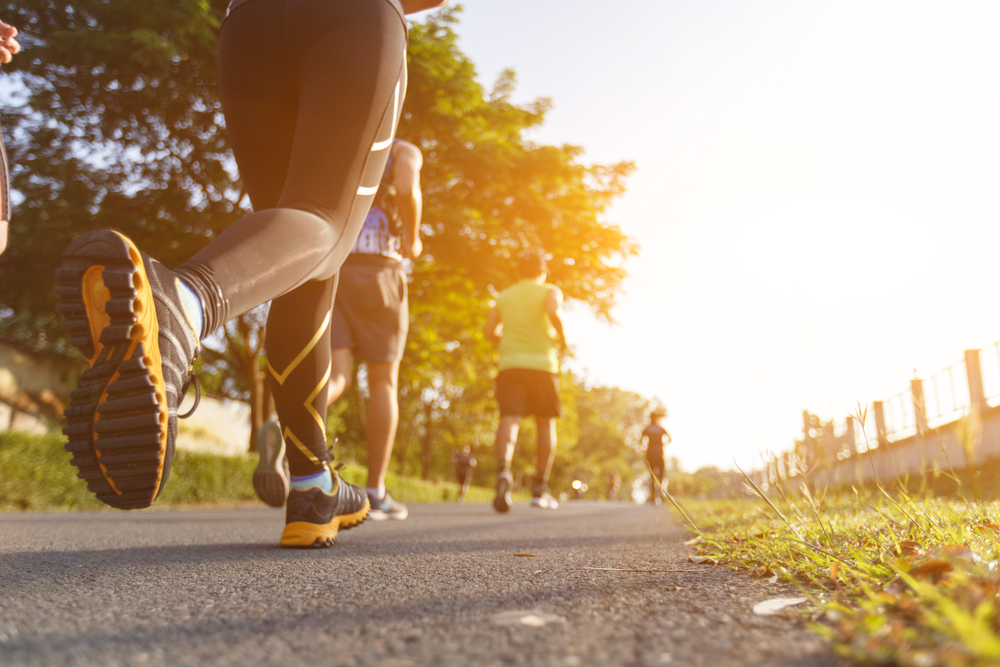Love isn’t the only human experience that may make you wonder, “How can something so good hurt so bad?” You might find yourself asking that question after your morning run, afternoon power walk, or other physical activity that demands a lot from your feet. Physical activities like running, brisk walking, and playing sports can be great for your body; exercise improves cardiovascular health, burns calories, and builds muscle strength. Summer is a great time to stay—or get—active, but you still need to take precautions to ensure your exercise routine is also healthy for your feet.
“Let’s face it—we all have a lot riding on our feet, and we demand a great deal from them, especially when we’re engaging in strenuous exercise,” says Dr. Marcus Yetter, DPM, a podiatrist at Saddleback Valley Podiatry Group and member of the American Podiatric Medical Association (APMA). Foot health is a key component of overall health and well-being. Fortunately, it’s not difficult to take the right steps toward protecting your feet when you run, jog, power walk, or engage in other exercise.
“Be aware of common ailments of the season like athlete’s foot, blisters, nail fungus, foot odor, and warts, and the summer foot fixes that can help cure them,” says Dr. Yetter.
You can also take these steps to minimize the risk of injury or other problems when running or exercising:
- Stretch before and after activity. Lactic acid is the chemical by-product of exercise that causes muscles to ache after a workout. Stretching improves your circulation and decreases the buildup of lactic acid; it can also help relieve stiffness and prevent strain. Simply flexing the hamstrings and stretching calves, Achilles tendons, and shins can help ensure your workout is safe.
- Choose an appropriate running shoe. The only real expense of running or walking is buying shoes, so it pays to invest in a good pair that will provide the support you need to have a safe, successful workout. If you’re prone to swollen feet later in the day, try on athletic shoes in the afternoon, when your feet are most swollen, to ensure a proper fit. Shoes should be stable from side to side, well-cushioned but with enough room to wiggle your toes, and snug to the heel. You can find a list of healthy footwear that carries APMA’s Seal of Acceptance on the organization’s website, www.apma.org/seal.
- Be aware of the surface. The surface you’re running on makes a difference in how hard the activity is on your feet. Hard, uneven ground can lead to stress fractures, slips, and falls. Softer ground is more foot-friendly and causes less shock than harder surfaces. If possible, run or walk on grass or dirt paths that are flat, even, and well-manicured.
- Think twice about running in inclement weather. If your feet are wet and cold, the ground will feel harder, and you’ll be more prone to slipping.
- Listen to your feet. It’s not normal to experience pain or changes in the feet and ankles. If you experience foot pain that lasts for more than a few days, see a podiatrist for evaluation. He or she can tell you if the pain is a minor, passing problem or a symptom of something more serious such as injury or disease.
“With some simple precautions, you can ensure your walking and running activities remain healthy and enjoyable for your entire body, especially your hardworking feet,” Dr. Yetter says.
Dr. Marcus Yetter, DPM, is a podiatrist at Saddleback Valley Podiatry Group in Laguna Hills, CA. Call (949) 768-9495 or visit www.saddlebackpodiatry.com to make an appointment. Visit www.apma.org to learn more about foot health and care.

